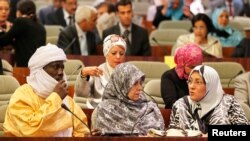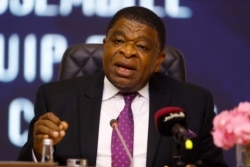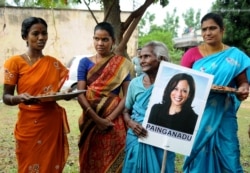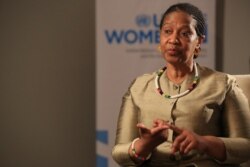More women continue to enter politics and government at the highest levels, but there is still widespread gender inequality globally for women in government and legislatures, the Inter-Parliamentary Union and the United Nations said Wednesday.
In its annual report on Women in Parliament, IPU found as of January 1, 2021, the global share of women in national legislatures is at 25.5%, just fractionally better than 24.9% a year ago.
“When you consider that 70% of front-line workers of the COVID pandemic — health care workers, service workers — are women, this level of representation [in government] is simply at odds with reality,” IPU Secretary General Martin Chungong said at the report’s launch.
The number of women holding the top job — president or prime minister — rose by only two — to 22. More than half of countries led by women are in Europe.
But the number of countries where women hold half or more of ministerial portfolios dropped from 14 to 13. Twelve countries have no women ministers at all — Armenia, Azerbaijan, Brunei, North Korea, Papua New Guinea, Saint Vincent and the Grenadines, Saudi Arabia, Thailand, Tuvalu, Vanuatu, Vietnam and Yemen.
“It is important to have women cabinet ministers because that’s the most important decision-making body in any government,” said U.N. Women Executive Director Phumzile Mlambo-Ngcuka.
A look at women in politics around the globe (map, downloadable version)
Americas
Chungong urged governments to use tools such as temporary quotas to “level the playing field” and improve women’s participation and representation in political life.
He points to Nicaragua, which leads globally both in women ministers — first place — and in parliament — fourth place — as representative of strong female representation across the Americas, including in Argentina, Bolivia, Brazil, Costa Rica and Mexico.
“When we look at their representation in parliament, the Americas are first because, again there are strong measures that have been taken to ensure that there are women on every rung of the political ladder,” Chungong said. “When you have strong political will, when that will is translated into legislation, into policies, into strong advocacy within political parties, this can make a difference and we see that.”
In North America, President Joe Biden’s administration has more than doubled the percentage of women in the Cabinet from his predecessor.
“The new Cabinet in the United States is turning out to be the most gender-balanced in the country’s history,” Chungong said. “Women in charge of ministerial portfolios rose from 17% in 2020 to 46% in 2021.”
This includes the first elected female vice president in U.S. history, Kamala Harris, and women holding senior national security positions and running important agencies, including the Treasury, Commerce and Energy.
Having powerful role models is important for women of all ages. Chungong noted that in the Caribbean nation of Jamaica, where Harris’ father is from, women’s representation in parliament grew in the aftermath of her rise.
“I think many Jamaican women looked up to Kamala Harris as a model and were spurred to go into politics,” he said. “Jamaican society said, ‘Yes, if we can have such a high-profile woman in a major country in the world, why shouldn’t we give a chance to our women?’”
In sub-Saharan Africa, Namibia had the most progress over the past year, increasing the number of female ministers in its government from 15% to 39%. Rwanda still dominates the region, with the highest percentage of female ministers and parliamentarians.
In Asia, just under 25% of the nearly 3,000 members of China’s National People's Congress are women. Mongolia had the biggest increase of women ministers in the region, jumping from 6.7% to 18.8%.
Barriers
A concerning obstacle for women seeking to enter politics is violence targeting them.
“Women find it difficult to be exposed to the violence, which impacts on their family, on their mental health, on their well-being, only because they want to take part in addressing matters that affect their own lives,” U.N. Women Chief Mlambo-Ngcuka said.
She also urged countries to reconsider minimum age requirements for legislators, which in many countries is 35 years old, to encourage the participation of younger women in politics.
“We need to make sure we remove those barriers to encourage and facilitate the entry of more women,” she said. “Maybe political parties and parliaments need to have special measures and quotas for young people.”
The IPU has been compiling data about women in politics on its map since 2005.













